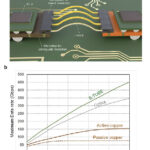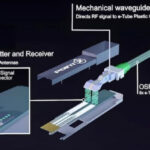Have you ever tried reconnecting your car battery and noticed sparks when attaching the negative terminal? It can be alarming, and many people wonder:
“Why does the negative battery cable spark when connecting?”
In most cases, it’s completely normal—but sometimes, it could be a warning sign. This guide will explain:
What causes those sparks
When it’s safe (and when it’s not)
How to minimize risk during battery connection
Is It Normal for the Negative Battery Cable to Spark?
Yes—sometimes.
A small spark is common when reconnecting the negative battery cable, especially if any electrical systems in the car are still drawing power.

why does negative battery cable sparks when connecting
What Causes the Spark?
Here are the main reasons your negative cable may spark:
⚡ 1. Capacitor Charging in the Car’s Electrical System
Modern vehicles contain electronic components—like ECUs, infotainment systems, and clocks—that hold charge in capacitors. When you reconnect the battery, these components draw a quick surge of current, causing a small spark.
✅ This is usually harmless.
⚡ 2. Electrical Load Left On
If you left any of the following on before disconnecting the battery:
Headlights
Interior lights
Radio or infotainment system
A/C or fan
…then the circuit will immediately draw power when you reconnect, leading to sparks.
✅ Turn everything off before connecting the battery to reduce sparking.
⚡ 3. Parasitic Drain or Faulty Components
If the spark is large or persistent, it could indicate a parasitic draw—meaning something in your vehicle is constantly draining power even when turned off.
🔍 Possible causes:
Malfunctioning alternator
Faulty relay or fuse
Aftermarket accessories wired improperly
⚠️ Large or repeated sparks should be checked by a mechanic.
⚡ 4. Loose or Dirty Connections
If the battery terminal or cable is dirty, oxidized, or loose, it can cause intermittent contact, which produces sparking.
✅ Clean the terminals with a wire brush and ensure the connection is tight and secure.
How to Safely Connect a Car Battery (Without Sparks)
To reduce or avoid sparks when reconnecting the negative cable, follow these steps:
Turn off all electronics in the vehicle
Ensure ignition is off and key is removed
Connect the positive cable first (+)
Then connect the negative cable (–)
Make sure the terminals are clean and free of corrosion
Tighten the connections securely
When Is the Spark Dangerous?
If the spark is:
Very large or bright
Accompanied by crackling, smoking, or heat
Followed by strange electrical behavior
Happens even when everything is off
…then you may have a short circuit or faulty component.
🚨 In that case, stop immediately and have your vehicle inspected by a professional.
Final Answer: Why Does the Negative Battery Cable Spark When Connecting?
It sparks because your car's electrical system briefly draws current as soon as the battery circuit is completed.
This is usually normal, especially in modern vehicles with many onboard electronics. However, strong or frequent sparks could indicate an electrical issue that requires further diagnosis.
Related Questions
Q: Is it safe if my battery cable sparks?
Yes, minor sparks are common. Large sparks may indicate a problem.
Q: Should I connect positive or negative first?
Always connect positive first, disconnect negative first. This reduces the risk of short circuits.
Q: Can a bad ground cable cause sparking?
Yes. A poor ground connection can lead to arcing and sparks during contact.
Bonus Tip: Use Protective Gear
When handling car batteries, always:
Wear gloves and eye protection
Avoid touching both terminals at once
Keep flammable materials away
Now you know why the negative battery cable sparks when connecting—and how to tell if it’s normal or dangerous. Take the proper precautions, and you can reconnect your car battery with confidence.





